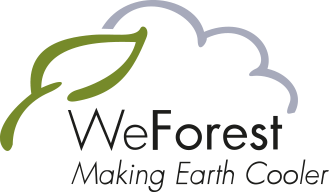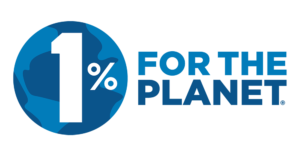
In the Sahelian region at the western end of Africa’s Great Green Wall, desertification is bringing hunger and drought, driving migration and disrupting education. In this first phase (2022-2024), WeForest and partner Agronome et Vétérinaires Sans Frontières (AVSF) will regreen over 900ha in three pastoral units.
The project’s highlights this year included the planting season in the pastoral units, Younouféré, Vélingara and Labgar, bringing us to 499.64 ha under restoration to date.
Another exciting milestone was the construction and start of operations of the project’s own tree nurseries. Finally, the project’s livelihoods strategy – which will make sure that the people living here can raise incomes through sustainable activities that don’t put pressure on forest resources – is almost complete.
Each year, new community members take part, because planting takes place in different sites. This means that the first activities of the year include awareness sessions and training for the new participants on a large scale.
Fencing of the new planting sites also takes place early in the year, usually in January or February. This year saw a total of four sites prepared for planting across the three pastoral units (PUs): three new sites and an extension of a 2022 experimental site.
After fencing, the tractor is brought in to prepare the ground. This year we had a nice surprise: the Ministry’s Department of Water and Forestry presented the team with a surplus delfino plough they didn’t need anymore. This saved costs, because for the project’s first planting season in 2022 we hired both the tractor and the plough from a private company, and this year we only had to pay for the tractor hire and fuel costs. It’s also a good sign that the Ministry is willing to support the project.
They hadn’t used their old plough since 2009, so a few repairs were needed – but then the team was ready for the off! The plough makes the half-moon basins in which the new seedlings are planted. The half-moon shapes collect rainwater that would not be absorbed by the ground otherwise, due to the surface runoff caused by the reduced water-holding capacity of the soils here. In this way, the young planted seedlings receive enough water to survive their vulnerable early days.
The rain stopped unexpectedly for a while, and tools needed to be distributed on a large scale to the new communities, but by August planting was underway. This year the area had a very variable rainy season, with one or two weeks without any rain. This isn’t normal; usually between August and September it can rain for three or four days per week.
This year we planted 444.78 ha across the three pastoral units, which together with the 54.86 ha planted in 2022 brings the project to 499.64 ha under restoration to date. This year was the first year that planting took place outside of the experimental plots.
The project combined the planting of seedlings with direct seeding of tree species as an additional restoration approach. Some of the species for direct seeding are IUCN-listed.
Scientific name | English name | Local name (Wolof) | IUCN Red List | Method |
|---|---|---|---|---|
Acacia tortilis | umbrella thorn; acacia | Thilouki | Least concern | planting; direct seeding
|
Adansonia digitata
| African baobab | Bokki | n/a
| planting; direct seeding |
Balanites aegyptiaca | Egyptian balsam
| Muurtoki | Least concern | planting; direct seeding |
Combretum glutinosum | – | Rat | Least concern | planting
|
Combretum micranthum | – | Talli | Least concern | direct seeding |
Dalbergia melanoxylon | African blackwood | Dialanbani | Near threatened | planting; direct seeding |
Grewia bicolor | false brandy bush | Kelli | n/a
| planting; direct seeding |
Guiera senegalensis | – | Geloki | Least concern | planting; direct seeding |
Moringa oleifera | moringa; drumstick tree | Nébéday | Least concern | planting |
Piliostigma reticulatum | – | Barkeyi | n/a
| direct seeding |
Pterocarpus lucens
| – | Tchangui | Least concern | direct seeding |
Pterocarpus erinaceus | Kosso; African kino tree | Bani | Endangered | direct seeding |
Sclerocarya birrea | marula | Erri | n/a
| planting; direct seeding |
Senegalia senegal | gum acacia | Patuki | n/a | planting; direct seeding |
Vachellia nilotica | gum Arabic tree | Gaudi | Least concern | planting; direct seeding |
Ziziphus mauritiana | Indian jujube | Diabe | Least concern | planting; direct seeding |
A few months after planting and direct seeding finished in August, it was time to monitor the short-term survival of the seedlings across the planted restoration sites – that’s all 2023 plantings excluding the Labgar experimental plot (444.78ha – 24.99ha = 419.79ha).
Out of this year’s four restoration sites, three of them have good results so far. The least successful is in Lagbar, the most northerly of the pastoral units, where there’s not very much rain. Restoration that has been done here as a national initiative in previous years has not been successful, and that’s why ISRA is testing four different techniques in our project’s three ~25 ha experimental plots (79.85 ha in total) to optimize survival rates across different rainfall gradients, even in the very driest of the PUs:
At the moment it’s too early to tell which of these techniques will be the most promising, but watch this space!
The project’s tree nurseries are open
2023 saw the start of operation of the project’s own tree nurseries, one per pastoral unit. These nurseries were previously owned by the Department of Water and Forestry, and as well as their 3-4 permanent staff members, the Labgar and Velingara nurseries are benefiting from funding by a government programme that supports temporary workers to help in the nursery at busy times of the year. Each nursery will grow seedlings for its own pastoral unit and is expected to have 137000 seedlings ready for planting by August 2024. The seedlings for the two experimental plots planted in 2022 were provided by the Dahra nursery.
As the year draws to a close, it’s time to start seed collection. This activity is carried out by the communities, who are paid for each kilogram of seeds they collect, which are then nurtured into seedlings in the nursery or directly planted when planting season comes.
The participants were trained in how to collect seeds in the surrounding forests – some, such as several Acacia species, are very small and hard to find – and WeForest’s Senegal Forestry Expert, Omar Sall, provided a list with quantities of each of the 13 species required, totalling 1744kg altogether. Initially, a group of 10 community members signed up for seed collection, but once it was underway in November, more people became interested and began to go out and collect seeds for the project.
Who oversees the activities?
While WeForest and partner Agronome et Vétérinaires Sans Frontières (AVSF) are the co-partners running the Ferlo project, the actual field work is overseen by the Institut Sénégalais de Recherches Agricoles (ISRA), a governmental institute that designs and implements research in crops, forests, animal and fish production, and rural economy. So we can ensure that data is reported thoroughly and accurately from the planting and monitoring activities, there are 18 ISRA master students and 3 doing a PhD working as interns on the project, with one of their tasks being to follow the activity and progress on the experimental sites.
At the moment, many people’s livelihoods depend on the trees that remain here (outside of our restoration areas). The communities collect the fruits of Ziziphus mauritiana (Indian jujube) and Balanites aegyptiaca (desert date) from the forest and sell them in the local market to the “banabana”, traders who resell products in cities. In some areas they produce balanites oil with the kernels or juice from the Ziziphus mauritania fruit, mostly for their own consumption. Acacia senegal is also exploited, mainly by men, for its gum.
The Ferlo project will support the value chain for the people within our three pastoral units so that they can rely on incomes from sustainable activities. During 2023, a consultant was hired to help develop the project’s livelihood strategy, and held three workshops with the communities to identify the products that can be sustainably supplied by our restored forests here and which will provide the most steady incomes.
One product which demonstrates promise in all the PUs is oil used in cosmetics from Ziziphus mauritiana and Balanites aegyptiaca, which grow naturally here and are being planted by the project. Unlike fruit, which needs to be harvested when trees are mature, oil can be sustainably harvested from younger trees.
The livelihoods strategy, which is nearly finished, also identifies some key actors to help market the products, and capacity building will enable community members to work in the production process. The strategy is expected to be ready by the end of January 2024, after which it will be implemented across the three PUs.
What is transhumance?
In Senegal, someone who practices transhumance, which is the seasonal movement of livestock and herders between different grazing areas, is often referred to as a “transhumant herder” or simply a “transhumant.” These individuals are typically part of pastoral communities and engage in the traditional practice of moving their livestock, such as cattle, sheep, or goats, in search of suitable grazing lands and water sources, especially during the dry season. Transhumance is an important livelihood strategy in many parts of Senegal and West Africa, as it allows herders to adapt to seasonal changes in resource availability. It’s not unique to Africa, occurring across many continents including large parts of Europe & central Asia.
Every hectare under restoration is mapped with GPS points to generate polygons (areas on a map) that are assigned to sponsors. Permanent monitoring plots are established in our sites and our forestry and science teams conduct surveys to monitor progress of biomass growth, tree density, survival rate and species diversity, among other indicators. Where social impacts are also critical, we measure socio-economic indicators such as the number of individuals or families directly benefiting, people trained, and income generated from forest-friendly livelihood activities.
Please visit our What We Do web page for more information.
Thank you for supporting the Ferlo project!
HQ (BE): WeForest asbl/vzw
Cantersteen 47, 1000 Brussels, Belgium
VAT number BE0826.151.968
Incorporated May 26th 2010
WeForest is a supporting member of:





| Cookie | Duration | Description |
|---|---|---|
| __cf_bm | 1 hour | This cookie, set by Cloudflare, is used to support Cloudflare Bot Management. |
| _GRECAPTCHA | 6 months | Google Recaptcha service sets this cookie to identify bots to protect the website against malicious spam attacks. |
| cookielawinfo-checbox-analytics | 11 months | This cookie is set by GDPR Cookie Consent plugin. The cookie is used to store the user consent for the cookies in the category "Analytics". |
| cookielawinfo-checbox-functional | 11 months | The cookie is set by GDPR cookie consent to record the user consent for the cookies in the category "Functional". |
| cookielawinfo-checbox-others | 11 months | This cookie is set by GDPR Cookie Consent plugin. The cookie is used to store the user consent for the cookies in the category "Other. |
| cookielawinfo-checkbox-advertisement | 1 year | Set by the GDPR Cookie Consent plugin, this cookie records the user consent for the cookies in the "Advertisement" category. |
| cookielawinfo-checkbox-necessary | 11 months | This cookie is set by GDPR Cookie Consent plugin. The cookies is used to store the user consent for the cookies in the category "Necessary". |
| cookielawinfo-checkbox-performance | 11 months | This cookie is set by GDPR Cookie Consent plugin. The cookie is used to store the user consent for the cookies in the category "Performance". |
| CookieLawInfoConsent | 1 year | CookieYes sets this cookie to record the default button state of the corresponding category and the status of CCPA. It works only in coordination with the primary cookie. |
| elementor | never | The website's WordPress theme uses this cookie. It allows the website owner to implement or change the website's content in real-time. |
| JSESSIONID | session | New Relic uses this cookie to store a session identifier so that New Relic can monitor session counts for an application. |
| Path | session | Description is currently not available. |
| viewed_cookie_policy | 11 months | The cookie is set by the GDPR Cookie Consent plugin and is used to store whether or not user has consented to the use of cookies. It does not store any personal data. |
| Cookie | Duration | Description |
|---|---|---|
| _hjAbsoluteSessionInProgress | 1 hour | Hotjar sets this cookie to detect a user's first pageview session, which is a True/False flag set by the cookie. |
| _hjIncludedInSessionSample_2773626 | 1 hour | Description is currently not available. |
| aka_debug | session | Vimeo sets this cookie which is essential for the website to play video functionality. |
| authstrategy | session | Description is currently not available. |
| li_gc | 6 months | Linkedin set this cookie for storing visitor's consent regarding using cookies for non-essential purposes. |
| lidc | 1 day | LinkedIn sets the lidc cookie to facilitate data center selection. |
| pll_language | 1 year | Polylang sets this cookie to remember the language the user selects when returning to the website and get the language information when unavailable in another way. |
| UserMatchHistory | 1 month | LinkedIn sets this cookie for LinkedIn Ads ID syncing. |
| Cookie | Duration | Description |
|---|---|---|
| SRM_B | 1 year 24 days | Used by Microsoft Advertising as a unique ID for visitors. |
| Cookie | Duration | Description |
|---|---|---|
| _ga | 1 year 1 month 4 days | Google Analytics sets this cookie to calculate visitor, session and campaign data and track site usage for the site's analytics report. The cookie stores information anonymously and assigns a randomly generated number to recognise unique visitors. |
| _ga_* | 1 year 1 month 4 days | Google Analytics sets this cookie to store and count page views. |
| _gcl_au | 3 months | Google Tag Manager sets the cookie to experiment advertisement efficiency of websites using their services. |
| _hjFirstSeen | 1 hour | Hotjar sets this cookie to identify a new user’s first session. It stores the true/false value, indicating whether it was the first time Hotjar saw this user. |
| _hjSession_* | 1 hour | Hotjar sets this cookie to ensure data from subsequent visits to the same site is attributed to the same user ID, which persists in the Hotjar User ID, which is unique to that site. |
| _hjSessionUser_* | 1 year | Hotjar sets this cookie to ensure data from subsequent visits to the same site is attributed to the same user ID, which persists in the Hotjar User ID, which is unique to that site. |
| ajs_anonymous_id | 1 year | This cookie is set by Segment to count the number of people who visit a certain site by tracking if they have visited before. |
| ajs_group_id | 1 year | This cookie is set by Segment to track visitor usage and events within the website. |
| ajs_user_id | 1 year | This cookie is set by Segment to help track visitor usage, events, target marketing, and also measure application performance and stability. |
| AnalyticsSyncHistory | 1 month | Linkedin set this cookie to store information about the time a sync took place with the lms_analytics cookie. |
| CLID | 1 year | Microsoft Clarity set this cookie to store information about how visitors interact with the website. The cookie helps to provide an analysis report. The data collection includes the number of visitors, where they visit the website, and the pages visited. |
| CONSENT | 2 years | YouTube sets this cookie via embedded YouTube videos and registers anonymous statistical data. |
| MR | 7 days | This cookie, set by Bing, is used to collect user information for analytics purposes. |
| s_vi | 2 years | An Adobe Analytics cookie that uses a unique visitor ID time/date stamp to identify a unique vistor to the website. |
| SM | session | Microsoft Clarity cookie set this cookie for synchronizing the MUID across Microsoft domains. |
| VISITOR_PRIVACY_METADATA | 6 months | Description is currently not available. |
| vuid | 1 year 1 month 4 days | Vimeo installs this cookie to collect tracking information by setting a unique ID to embed videos on the website. |
| Cookie | Duration | Description |
|---|---|---|
| ANONCHK | 10 minutes | The ANONCHK cookie, set by Bing, is used to store a user's session ID and verify ads' clicks on the Bing search engine. The cookie helps in reporting and personalization as well. |
| bcookie | 1 year | LinkedIn sets this cookie from LinkedIn share buttons and ad tags to recognize browser IDs. |
| bscookie | 1 year | LinkedIn sets this cookie to store performed actions on the website. |
| IDE | 1 year 24 days 1 minute | Google DoubleClick IDE cookies store information about how the user uses the website to present them with relevant ads according to the user profile. |
| li_sugr | 3 months | LinkedIn sets this cookie to collect user behaviour data to optimise the website and make advertisements on the website more relevant. |
| muc_ads | 1 year 1 month 4 days | Twitter sets this cookie to collect user behaviour and interaction data to optimize the website. |
| MUID | 1 year 24 days | Bing sets this cookie to recognise unique web browsers visiting Microsoft sites. This cookie is used for advertising, site analytics, and other operations. |
| personalization_id | 1 year 1 month 4 days | Twitter sets this cookie to integrate and share features for social media and also store information about how the user uses the website, for tracking and targeting. |
| test_cookie | 15 minutes | doubleclick.net sets this cookie to determine if the user's browser supports cookies. |
| VISITOR_INFO1_LIVE | 6 months | YouTube sets this cookie to measure bandwidth, determining whether the user gets the new or old player interface. |
| YSC | session | Youtube sets this cookie to track the views of embedded videos on Youtube pages. |
| yt-remote-connected-devices | never | YouTube sets this cookie to store the user's video preferences using embedded YouTube videos. |
| yt-remote-device-id | never | YouTube sets this cookie to store the user's video preferences using embedded YouTube videos. |
| yt.innertube::nextId | never | YouTube sets this cookie to register a unique ID to store data on what videos from YouTube the user has seen. |
| yt.innertube::requests | never | YouTube sets this cookie to register a unique ID to store data on what videos from YouTube the user has seen. |
| Cookie | Duration | Description |
|---|---|---|
| __tld__ | session | Description is currently not available. |
| ajscookies | 1 year | No description available. |
| ajstest | 1 year | No description available. |
| debug | never | No description available. |